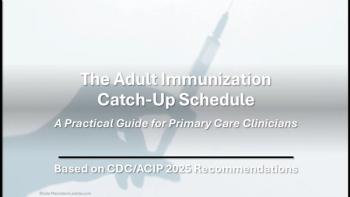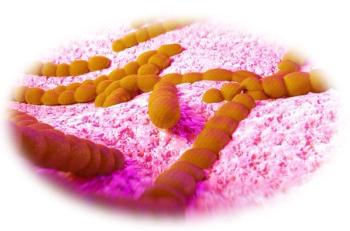
Wheezing or Asthmatic Children May Be Bugged by Allergens
What is the connection between cockroach allergy and wheezing or asthmain children?
What is the connection between cockroach allergy and wheezing or asthmain children?---- MD
A number of studies have demonstrated thatcockroach allergy is a major cause of asthmain older, inner-city children. One study foundthat in 476 inner-city children with asthma,37% were allergic to cockroaches, and highallergen levels were found in half of their bedrooms.1.Those children with the highest levels of exposure hadthe most severe asthma and were 3 times more likely torequire hospitalization.Call and associates2 found (using radioallergosorbenttesting) that a significant proportion of African Americaninner-city children with asthma were sensitive to cockroachallergen; they had been exposed to high levels ofthe allergen in their homes. Garcia and coworkers3 comparedcockroach sensitization rates from urban, suburban,and rural areas of Kentucky. They found that 43% of theadults and children from rural areas had positive skin testresults for cockroach sensitivity, compared with 41% ofinner-city patients, indicating that rural exposure is similarto inner-city exposure. In addition, several studies havesuggested that cockroach-related wheezing may dependon factors other than socioeconomic status.4,5 Recently,Matsui and colleagues6 found that cockroach allergen levelsare associated with cockroach sensitization in suburbanhomes, in African American as well as other children.Repeated episodes of wheezing in infants and childrenyounger than 3 years is a common, widespread problem.Infants and young children are more likely to be hospitalizedwith asthma than are older children or adults.Viral upper respiratory tract infections and secondhandsmoke exposure are considered the primary causesof asthma in infants. IgE-mediated allergy is a much lesscommon cause of wheezing in this age group; thus, skintests are not routinely performed.However, studies have shown that the incidence ofasthma or wheezing attributable to cockroach exposure isincreasing in infants and young children. Gold and coworkers4found that the presence of cockroach allergen in thefamily room may increase the risk of repeated wheezingduring the first year of life, but they were unable to determinewhether the risk of wheezing was mediated throughallergic or nonallergic mechanisms.My colleagues and I5 found that 45% of asthmatic infantsand children younger than 3 years had at least 1 positivereaction on skin tests for common indoor allergens.One fourth had positive results on skin tests for cockroachextract, and 17% had positive results on tests for housedust mite extract. Even in the 49 infants who were youngerthan 1 year, 28.5% had positive results on skin tests forcockroach and 10% had positive reactions on tests forhouse dust mite and cat.Delacourt and associates7 found that 25% of infantswith recurrent wheezing had positive results on skin testsfor either Dermatophagoides pteronyssinus or cat allergen.The larger number of infants and young children sensitizedto indoor inhalant allergens, such as cockroach anddust mite, suggests that the prevalence of allergy may beincreasing in this age group.5,7Thus, consider skin tests in all asthmatic children--regardless of age--who have persistent wheezing. Appropriateenvironmental control measures can then be institutedfor those patients with sensitivity to the indoorallergens.---- Mary Beth Hogan, MD
Associate Professor of Pediatrics
Pediatric Allergy/Immunology Section
Robert C. Byrd Health Sciences Center
West Virginia University School of MedicinevMorgantown
References:
REFERENCES:
1.
Gergen PJ, Weiss KB. Changing patterns of asthma hospitalization amongchildren: 1979 to 1987.
JAMA.
1990;264:1688-1692.
2.
Call RS, Smith TF, Morria E, et al. Risk factors for asthma in inner city children.
J Pediatr.
1992;121:862-866.
3.
Garcia DP, Corbett MI, Sublett JL, et al. Cockroach allergy in Kentucky: acomparison of inner city, suburban, and rural small town populations.
Ann Allergy.
1994;72:203-208.
4.
Gold DR, Berge HA, Carey V, et al. Predictors for repeated wheeze in the firstyear of life. The relative roles of cockroach, birth weight, acute lower respiratoryillness and maternal smoking.
Am J Respir Crit Care Med.
1999;160:227-236.
5.
Wilson NW, Robinson NP, Hogan MB. Cockroach and other inhalant allergiesin infantile asthma.
Ann Allergy Asthma Immunol.
1999;83:27-30.
6.
Matsui EG, Wood RA, Rand C, et al. Cockroach allergen exposure and sensitizationin suburban middle-class children with asthma.
J Allergy Clin Immunol.
2003;112:84-92.
7.
Delacourt C, Labbe D, Vassault A, et al. Sensitization to inhalant allergens inwheezing infants is predictive of the development of infantile asthma.
Allergy.
1994;49:843-847.
Newsletter
Enhance your clinical practice with the Patient Care newsletter, offering the latest evidence-based guidelines, diagnostic insights, and treatment strategies for primary care physicians.

















































































































































































































































































































